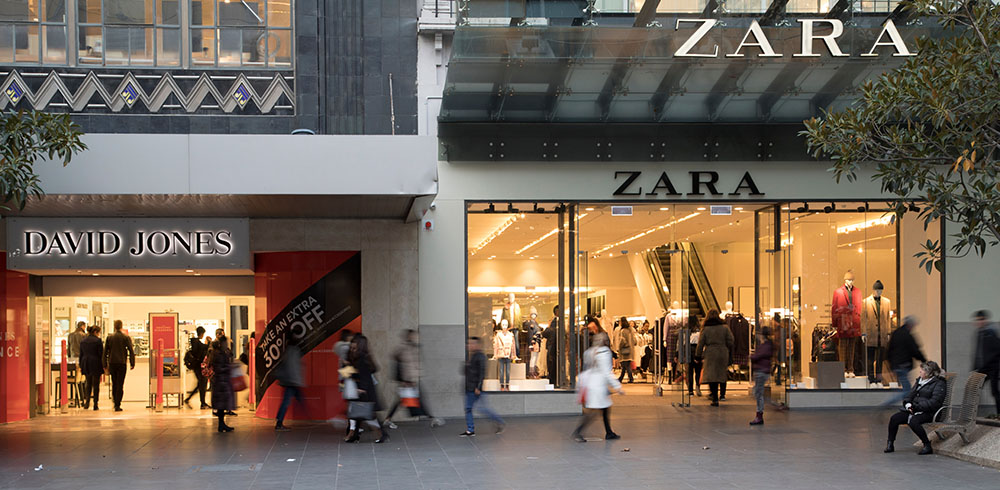The informed shopper – here’s what they do before they buy

Bricks and mortar may still reign supreme, but according to new data, more and more of the customer journey is being undertaken online.
From Googling products to seeking reviews, the customer is using the online realm to educate themselves and research, meaning they’ve often made a purchasing decision long before they enter a store.
It’s all part of the omnichannel adventure, and here’s how it unfolds.
Omnichannel in stats
Earlier this year Big Commerce released a study delving into the data of online retail. After surveying 3000 participants globally, they noted the vast majority of spending in Australian retail occurs offline, but digital is playing an increasingly important role in consumers’ offline purchase decisions.
They found Australians spend five per cent less than the global average when it comes to online purchases, designating just 26 per cent of our discretionary income to shopping online.
Compared to the US and UK, on average, Australian respondents cap online spending at $473, compared to a maximum of $922 in the UK and $798 in America.
We might be making the purchases in store, but more and more Australians are turning to the internet to arm ourselves with insight long before we buy.
The study found 48 per cent of Australians visit a retailer’s website prior to purchasing, and 28 per cent read reviews about the product or brand.
And when it comes to where we’ve been shopping in the past six months, it turns out:
- 65 per cent of Australian survey respondents shopped in store
- 48 per cent shopped in an online store
- 24 per cent shopped at Amazon
- 63 per cent shopped at eBay
- 5 per cent shopped on Instagram
- 4 per cent shopped on Snap-chat
- 13 per cent shopped on Facebook
Retail and omnichannel uptake

When Deloitte economics issued their annual Christmas Survey of retail sentiment this month, they also noted Australia was behind the UK and US in online uptake, but was steadily making ground.
“While Australia still has a long way to go to match the level of online sales in countries such as the US and UK in terms of sales volumes, we are undoubtedly seeing a local shift to similar business models – it’s just taking more time,” they reflected.
They further noted, the omnichannel trend was seeing more and more retailers focus on improving their strategy, with 31 per cent naming it as a strategic priority this Christmas.
This push was also likely to continue into 2019, they further predicted.
“They (retailers) are shifting away from traditional models, with stores acting merely as transactional centres, and instead investing in online and creating better customer experiences both in-store and on the purchase journey.”
Excluding product sales, some two thirds of retailers see the most important role of their physical stores as creating a better customer experience.
“Two thirds also cited omnichannel and customer experience as their number one strategic priority, suggesting that Australian retailers appear to be on the right track to success.”
The bricks and mortar advantage
Despite noting that globally online retail was increasing, Big Commerce clearly outlined the ongoing consumer preference for bricks and mortar.
“…the physical store remains an important channel despite a visible growth in e-commerce. On average, survey respondents still spend 69 per cent of their discretionary income each month in-store,” they explained.
And it all comes down to the bricks and mortar strength of a physical environment where people can interact with a product.
“…the inability to touch or try on an item prior to purchase remains one of the primary reasons that consumers dislike online shopping,” Big Commerce explained.
“Furthermore, the ability to touch and try on items is 3x more influential than other options in a consumer’s decision to make a purchase in a physical store.
“Moreover, merchants with both an online store and a brick-and-mortar presence have a major opportunity to advance the sale,” the report continued.
“When it comes to returning items purchased online, 50 per cent of consumers mail the item back. But, when consumers go into the store to return an item that was originally purchased online, 67 per cent browse or shop in that store afterwards.
This is a major opportunity for brick-and-mortar businesses to reclaim a portion of their lost sale – one that online-only brands do not have.”
The upshot is, online retail is indeed increasing in Australia, but bricks and mortar retailers are poised to embrace the change.
Those who seize the opportunity of leveraging the omnichannel environment are best primed to marry the inherent benefits of bricks and mortar with the convenience of the online world.